“Wild Flavors: Rediscovering the Real Superfoods of India”
Avocado toast is cute, but have you tried Pendhra toast?
PHOTO ESSAYS
Khushali
10/26/20247 min read
Let’s get something straight immediately: we’ve lost touch with our roots. What we eat, what we wear, what we consume every day—it’s often so far removed from where we come from that it feels like we’re living in a permanent episode of Lost (minus the tropical island). Somewhere along the way, in our rush toward fast food, fast fashion, and fast lives, we forget about our ancient culinary traditions, indigenous vegetables, and wild foods that sustained our ancestors and kept them healthy.
But hold on to your non-GMO kale, because it’s not too late! There’s a movement to rediscover the richness of India’s wild foods—those hidden gems that grow without human cultivation and are loaded with nutrients your trendy avocado toast can only dream of. So, let’s rewind the clock, head into the forests, and rediscover the real “superfoods” our country has been blessed with. Spoiler alert: It doesn’t involve quinoa from Peru.
A Brief (and Fun) History of Eating Seasonally
Long before supermarkets began lining their shelves with strawberries in December or imported asparagus in the dead of summer, people ate what nature gave them, when it gave it. India’s climate and topography have been designed for this exact rhythm, offering an astonishing variety of vegetables and fruits that grow naturally, in sync with the seasons. It’s like a divine pantry that restocks itself every few months. Genius, right?
But today? We’re eating off-season fruits and veggies that have been grown in labs, flown halfway across the world, and lost most of their nutrients (and soul) along the way. Strawberries in winter? Sure, why not. But while we’re busy gorging on imported produce, the indigenous communities in India are still in tune with nature, foraging for wild foods and keeping the knowledge of seasonality alive. And let me tell you, those wild foods are packing more nutritional power than all the fancy quinoa bowls we’re obsessed with.
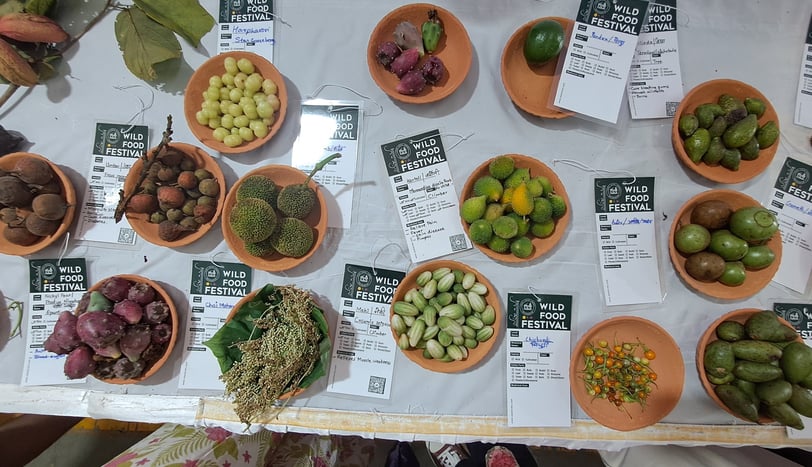

Wild foods are the ultimate unsung heroes of India’s food heritage. From ferns and bamboo shoots to mushrooms and tubers, India is home to over 1,000 wild edible plants that have been used for centuries. These wild foods are nutritional powerhouses, offering the perfect blend of vitamins, minerals, and antioxidants to support our health. And the kicker? They’ve been growing right under our noses, in forests and hills, completely untouched by pesticides and artificial fertilizers.
The Real Superfoods We’ve Been Ignoring
Let’s dive into the delicious wild world of Indian greens and veggies. These aren’t your supermarket’s sad, wilting spinach leaves. We’re talking kurdu, malabar embelia, fatangdi, Indian thorny bamboo—the kinds of vegetables that, let’s be honest, sound like they belong in a magical forest. But here’s the thing: these are far more beneficial than anything you'll find labeled as a "superfood" at your local health store.
For instance, kurdu, a wild leafy green, is packed with more iron than your average spinach and is loaded with antioxidants. Similarly, Indian thorny bamboo (also known as karil) has been a delicacy for generations, not only because of its tender, delicious shoots but also because of its rich nutritional profile. This wild cousin of the bamboo we know is high in fiber, making it great for digestion, and low in calories, which is a win-win for the health-conscious.
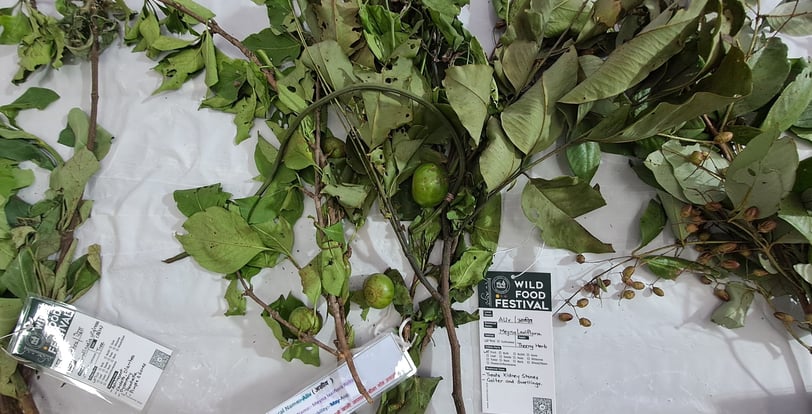

But it’s not just about leafy greens and bamboo. There’s fatangdi, a spiny plant that’s used in various traditional dishes. It’s particularly celebrated for its medicinal properties, like aiding digestion and acting as an anti-inflammatory. Malabar embelia, a small fruit with medicinal properties, has been used by Indigenous communities to treat digestive issues for centuries. This diversity of wild produce offers flavours, textures, and health benefits that our modern-day, imported superfoods simply can’t match.
How Did We Forget About These Foods?
A hundred years ago, our ancestors had diets that were far more diverse than ours today. They ate with the seasons and foraged for wild foods as part of their daily meals. Over time, however, monoculture farming practices and the introduction of the Public Distribution System (PDS) in India, which supplied white rice and wheat flour to a growing population, led to the decline of these wild foods in our everyday diet. Urbanization and the clearing of forests for development projects further eroded the connection between people and these once-common wild edibles.
The modern lifestyle doesn’t help either. We’ve become so dependent on supermarket aisles that we’ve forgotten about the wild abundance that nature offers. But as the world faces climate change, soil depletion, and rising health issues, the need to return to these indigenous foods has become more urgent than ever. Thankfully, movements are cropping up to revive these traditions.
My Foray into the World of Wild Foods: The Wild Food Festival 2024
Now, let’s talk about my adventure into the land of wild flavours. On a dreary Sunday afternoon in September, I ditched my usual plans and headed to the Wild Food Festival 2024 at the Rizvi College of Hotel Management in Mumbai, hosted by OOO Farms with my friend Sharen. And trust me, it was like stepping into a world I never knew existed.
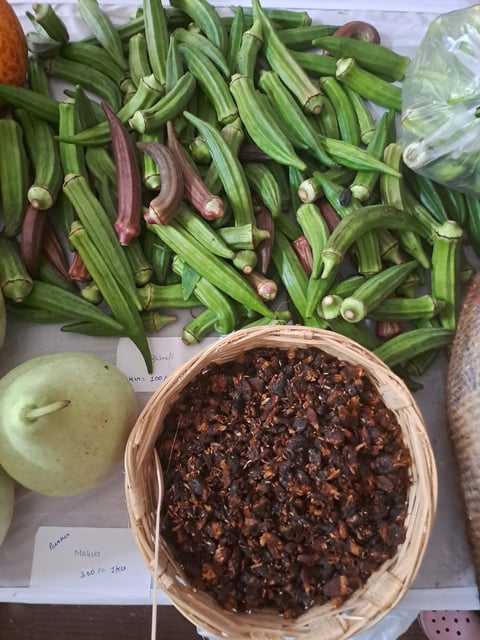

OOO farms has trained over 500 farmers to cultivate 100 types of wild foods. They have also revived many varieties of rice, alongside millets, wheat, ragi, and other disappearing native crops.
India has over 1,000 reported wild edible plants. This lush world of herbs, flowers, berries, leaves, vegetables, mushrooms, and tubers is often beyond reach, especially for city-dwellers. In an attempt to bring these two worlds together, OOO Farms in collaboration with The Locavore —a collective of farmers from Maharashtra and Gujarat—for the much-awaited sixth edition of Wild Food Festival on Sunday, 1 September 2024.
I was greeted by an array of 40 wild monsoon ingredients foraged from the Sahyadri mountains by tribal communities like the Koknis, Warlis, Mahadeo Kolis, and Katkaris. The dishes were prepared by 30 members from the community. It felt like stepping into an ancient forest of flavours, and boy, was I ready to get lost in it!

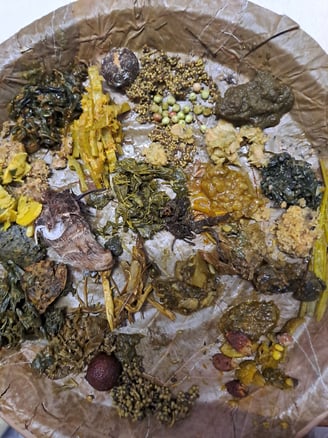
The festival wasn’t just about tasting exotic dishes, though. It was a deep dive into the wisdom of indigenous food traditions. I got to sample dishes like Pendhra Toast (forget avocado, this is the real deal), Fatangdi Fish Pockets, and even Mahua and Black Pepper Ice Cream. Yes, you read that right—wild food-inspired ice cream that made me question everything I thought I knew about dessert. Mahua, a wildflower that’s been used in tribal cooking for centuries, was an absolute revelation.
A wild-food-inspired high tea and snacks, prepared by the third-year students of Rizvi College of Hotel Management. The students trained and prepped for weeks to perfect the dishes—under the guidance of ChefTZac and Shailesh Awate, the founder of OOO Farms—learning more about the diversity of wild foods found in Maharashtra.
Alongside the menu put together by the students were wild food-inspired dishes curated by chefs and restaurants from Mumbai and Pune—Mahua Cinnamon Roll by Maska Bakery, Khurasni Herb Creamed Mushroom Medley Quiche by Subko, Bamboo Chilli Ginger Chenong by Ground Up among many more. Chef Amrita of Amrit Home Kitchen presented a Wild Salad highlighting seven wild greens with spiced mahua.
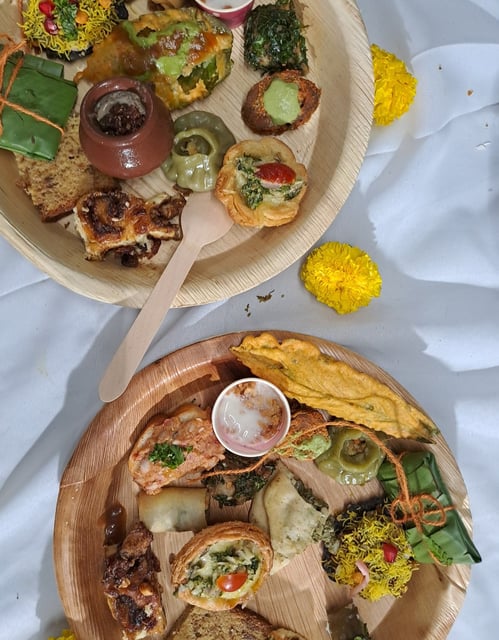

Learning the Ancient Wisdom
After stuffing my face with wild delicacies, it was time to feed my mind. The talks and panel discussions were eye-opening. Farmer scientists and chefs took to the stage to explain how indigenous communities have been custodians of India’s biodiversity, preserving not only wild foods but also ancient cooking techniques.
After the screening, the audience was introduced to the tribal communities who cooked for them. When one of the community members asked the audience how they liked the food, the audience responded with a loud “छान!” (“great”) in Marathi. The members also received a standing ovation.
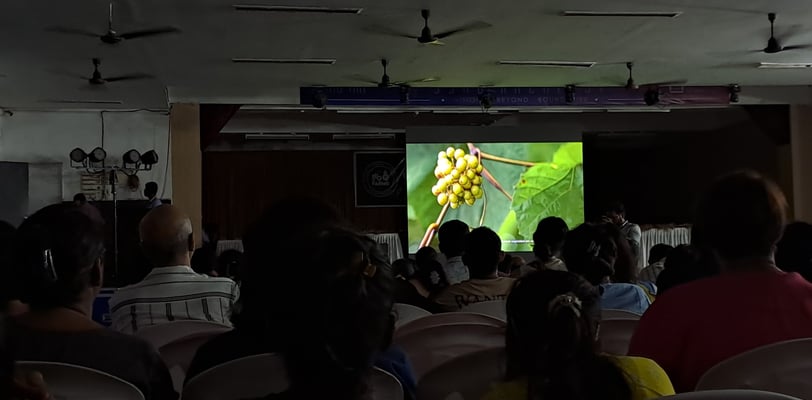

A 30-Dish Buffet That Changed My Life
After getting schooled in wild food wisdom, it was time for the main event—a 30-dish buffet that was as wild as it was delicious. I dove into Steamed Red Rice, Mahua Chilly Fritters, and Mohachey Gulab Jamun (which made me rethink every regular gulab jamun I’ve ever had). These dishes weren’t just about flavour; they were about connecting with the land, the seasons, and the generations of people who have been eating these foods for centuries.
And to top it all off, there was a bustling farmers’ market where I picked up some forest honey, sprouted ragi malt, and even mahua-based baby massage oil—because who doesn’t want their baby to smell like the forest?
The Takeaway: Eat Wild, Live Wild
By the end of the day, I was stuffed, enlightened, and, honestly, a little ashamed of how disconnected I had become from nature’s bounty. The Wild Food Festival wasn’t just a food event but a reminder of what we’ve lost and can still reclaim.
So, the next time you’re at the supermarket, staring at an off-season apple from who-knows-where, think about the wild foods waiting just outside your city limits. Let’s reconnect with our roots, quite literally, and give our bodies the seasonal, nutrient-rich food they’ve been craving. Because let’s face it—kurdu is the new kale, and Pendhra toast is about to take over your brunch game.
